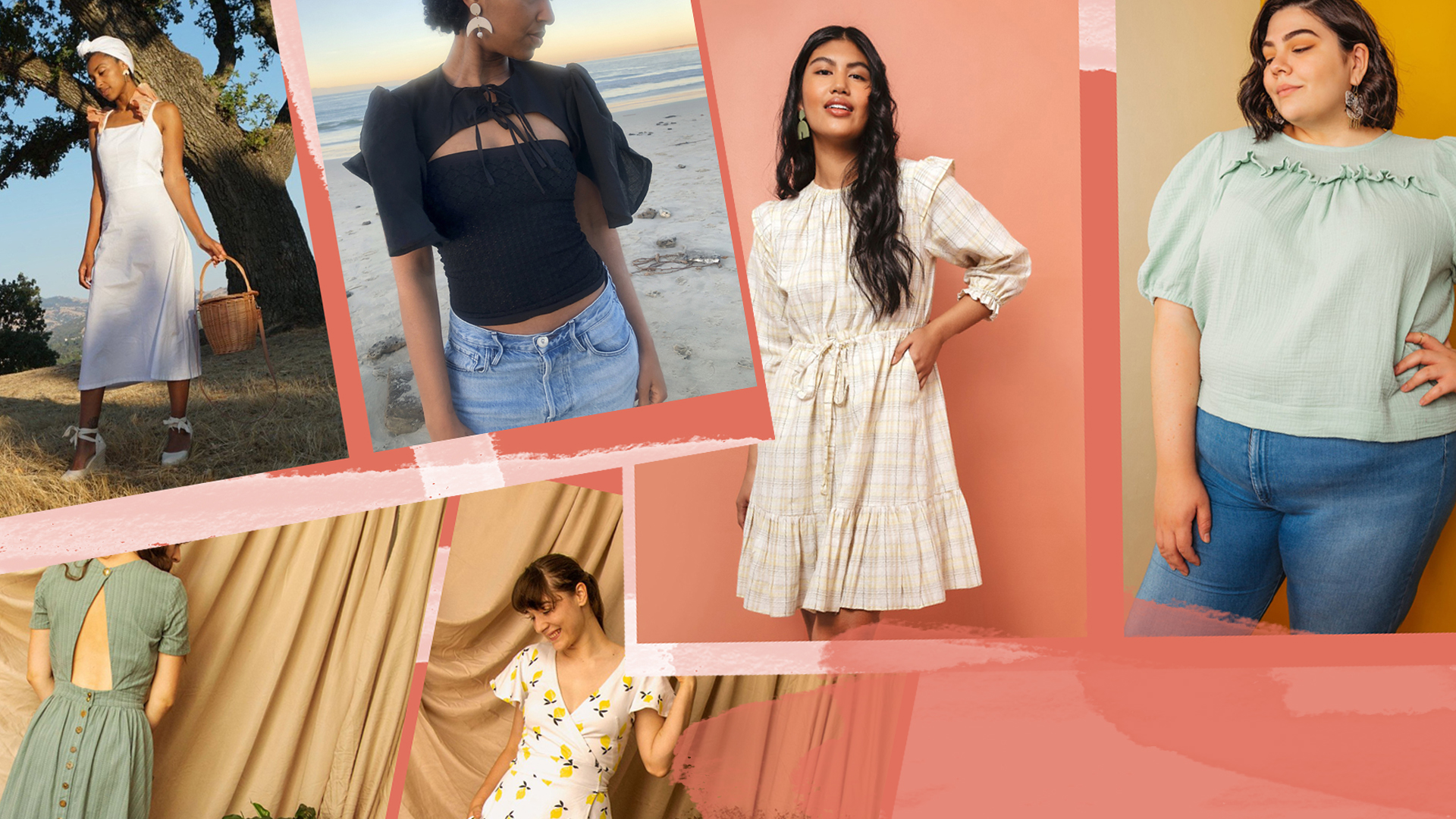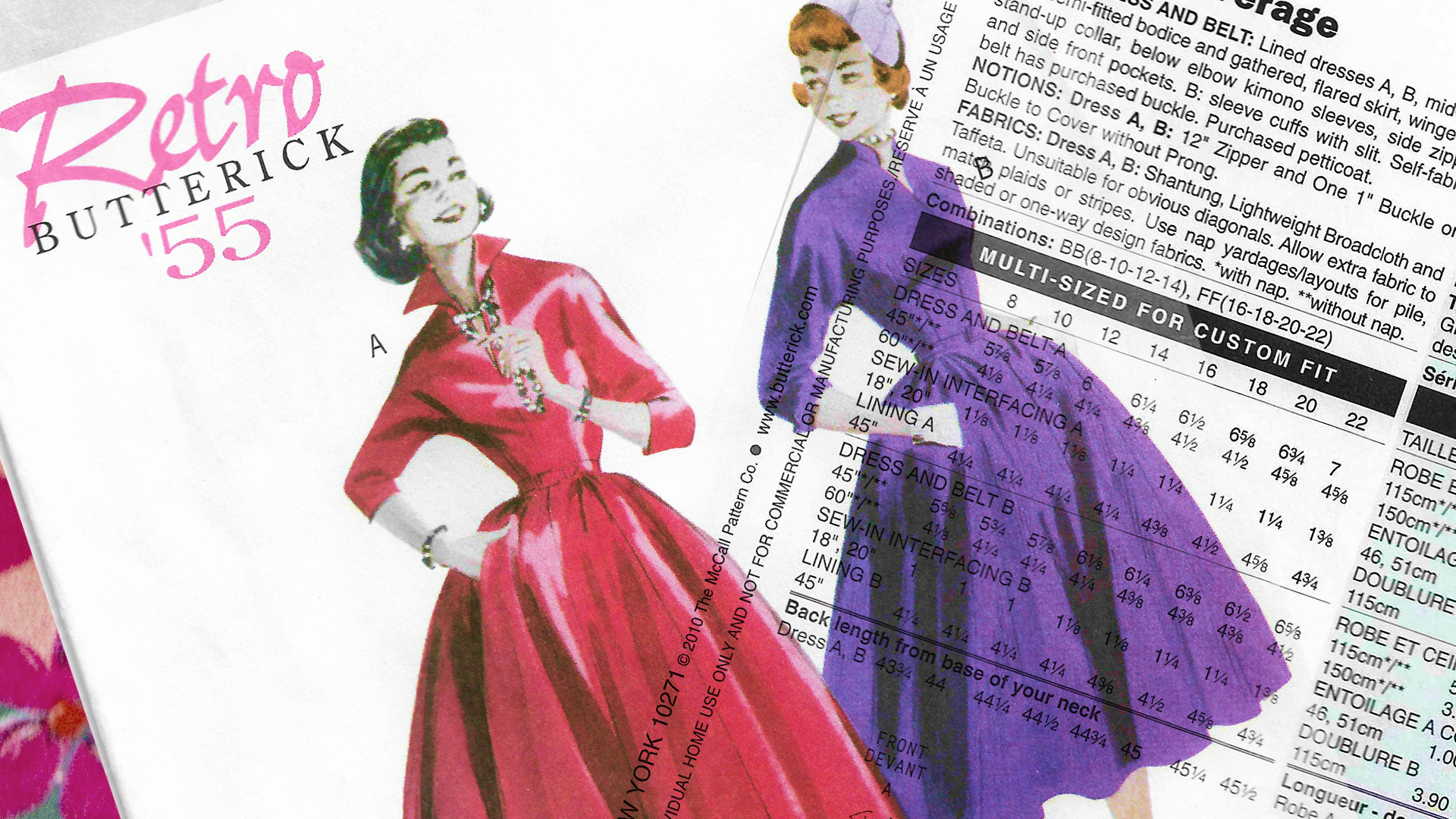Paper or PDF pattern?

It’s easy to have a paper pattern buying addiction. I’m *far* from immune to the 2$ Joann’s pattern sale which has left me with a collection of over 1000 printed sewing patterns.
But having so many paper patterns… from the same big companies is kind of a problem.
These printed patterns take up a lot of space. They also tend to all be designed from the same pattern block. Sometimes, they tend to not be so fresh (design-wise.) And, potentially worse, the designers may be hit or miss as to whether or not they align with your personal values.
Enter PDF pattern companies.
This post features three PDF pattern designers I’m excited about right now and encourage you check out!
PLEASE NOTE! This is not a sponsored post. I’ve actually not worked with their designs in the past. But I think they’re doing some interesting work and wanted to highlight them in this post.
Friday Pattern Company
Their PDF pattern designs are modern but with minimalist sensibilities and some cute details!
What I particularly love about Friday Pattern Company is that their pdf sewing patterns go up to 7X! The increase in size range makes these designs extremely inclusive, opening the door for more people to dip their toe in and make something that makes them feel like a million bucks.
The two patterns below, the Davenport Dress and Sagebrush Top are gorgeous.

Both designs are feminine, practical, and have a completely different feels if sewn in different fabric. Both are extremely accessible.
A few other reasons to be excited about Friday Pattern Company:
- The Friday Pattern Company size range demonstrates they’ve been committed to the mission for a while.
- Their patterns are both available in PDF AND paper
- They donate 5% of their pattern sales to charity and each pattern has a different correlated charity!
Untitled Thoughts
Besides being absolutely in love with the company name, the commitment to eco-consciousness is real with Untitled Thoughts! Brittani, who owns the small design studio, goes in depth in the About Me page about how she’s staying committed to caring for the planet.
This even includes information about the light bulbs which are used in the studio to ensure energy efficiency!
The two patterns below, the Amelie and Mathilde dresses are both beautiful, and are really in the spirit of a summer picnic.

In addition to what I’ve mentioned above, Untitled Thoughts also donates 5-10% to charity. There’s even a yearly transparency report breaking down where the funds were sent! The amount of integrity with Untitled Thoughts is extremely refreshing, and for a PDF pattern company which is a one-person operation, it’s extremely impressive.
Bambini del Mare
The PDF pattern company I’m most excited about right now is Bambini del Mare. Serah, who owns and designs this small brand, is a Bay Area local who attended CCA (California College of the Arts) — just a stone’s throw away from the VoT studio!
The two patterns below are my favorite from what has been designed so far:

A couple more reasons I’m excited about Bambini del Mare:
- The looks are all extremely romantic– they’re all gorgeous and vintage inspired without being frumpy
- Serah is focused on sustainability and philanthropy and donates 5% of her earnings per quarter to a rotating list of charities.
PDF pattern companies are doing interesting things.

From donating to causes they care about, to going above and beyond with size inclusivity, to even sourcing their sample fabrics to ensure they’re sustainable, it’s extremely impressive. These are examples of what us, as sewing consumers, have an opportunity to support and vote with our dollar on.
While working with PDFs can come with their own set of challenges, there’s opportunities to explore new (pattern) points of view and new pattern blocks, all while supporting a small company.

Like what you see?






